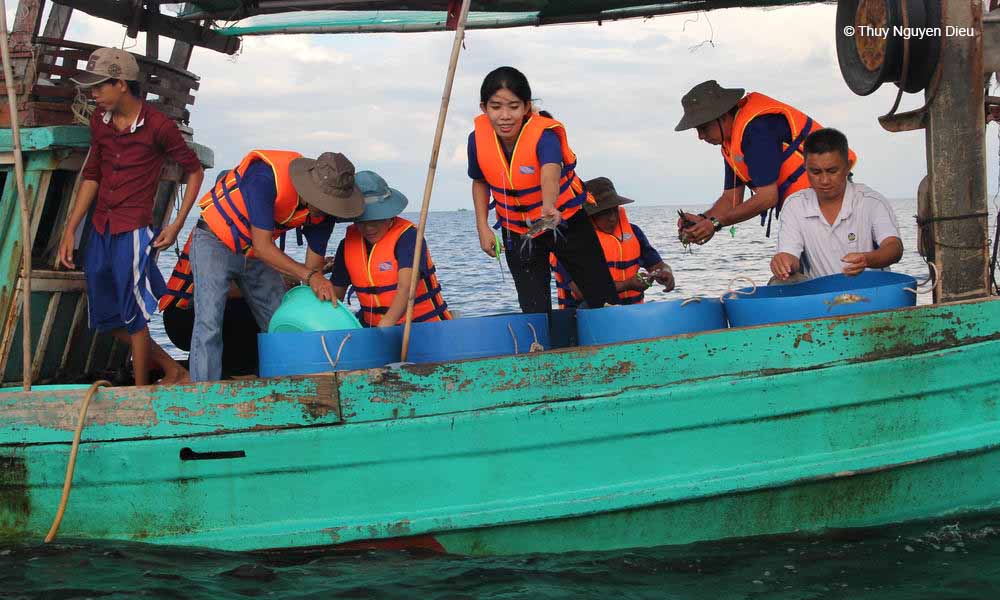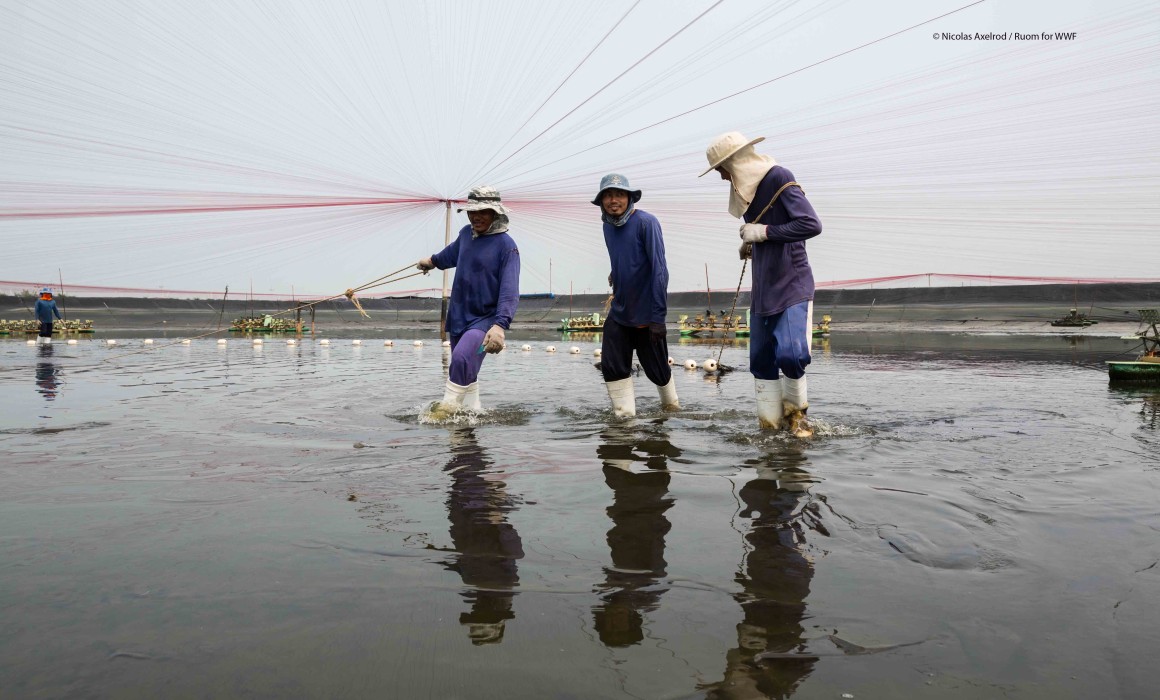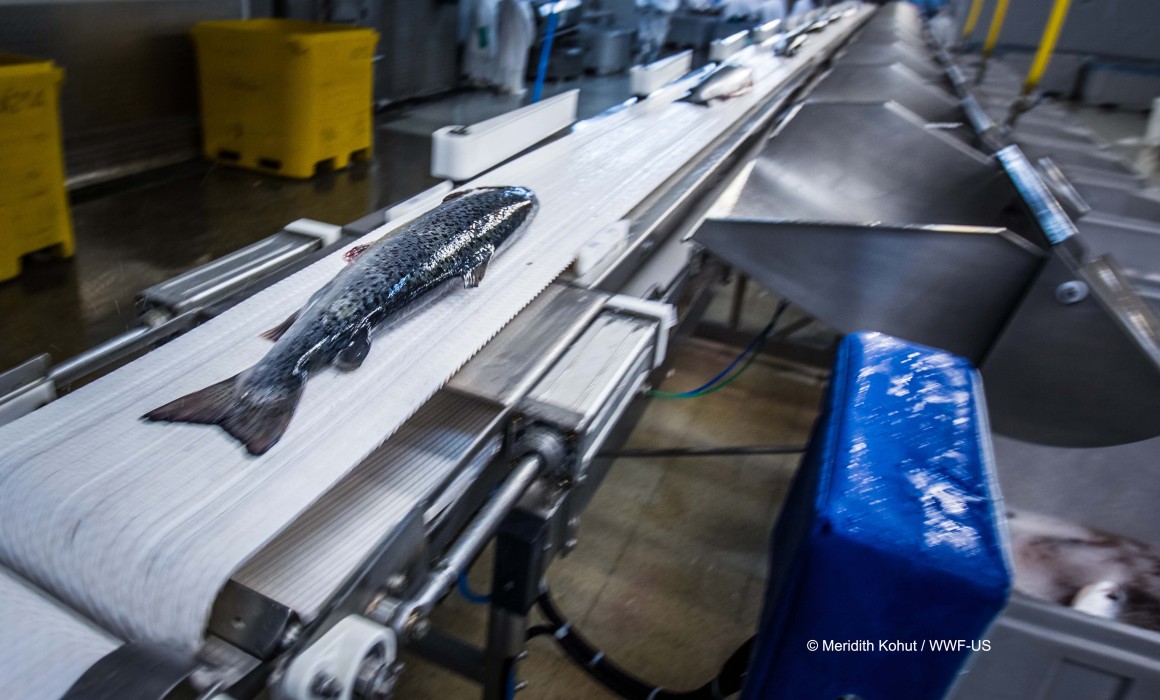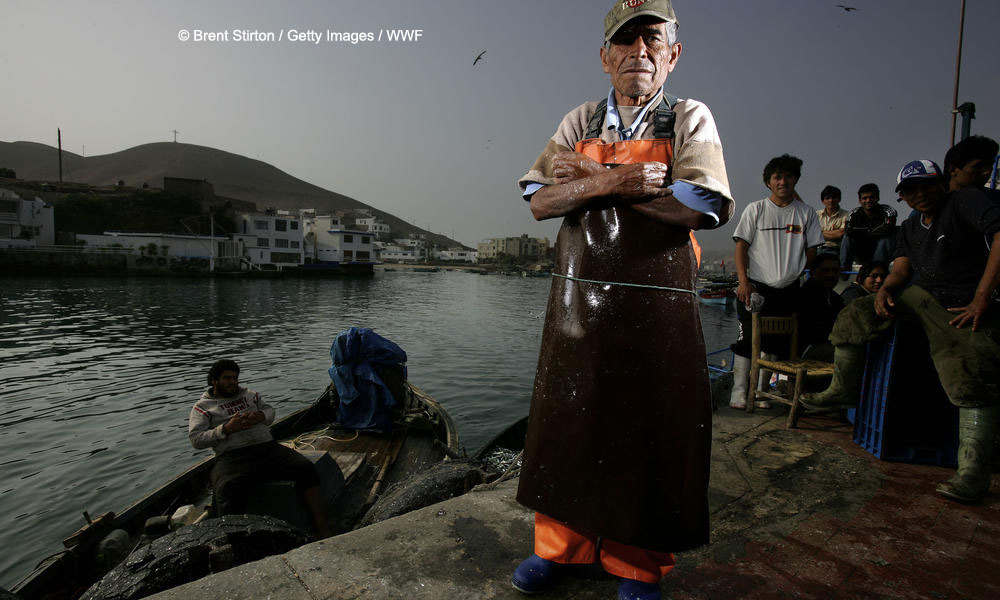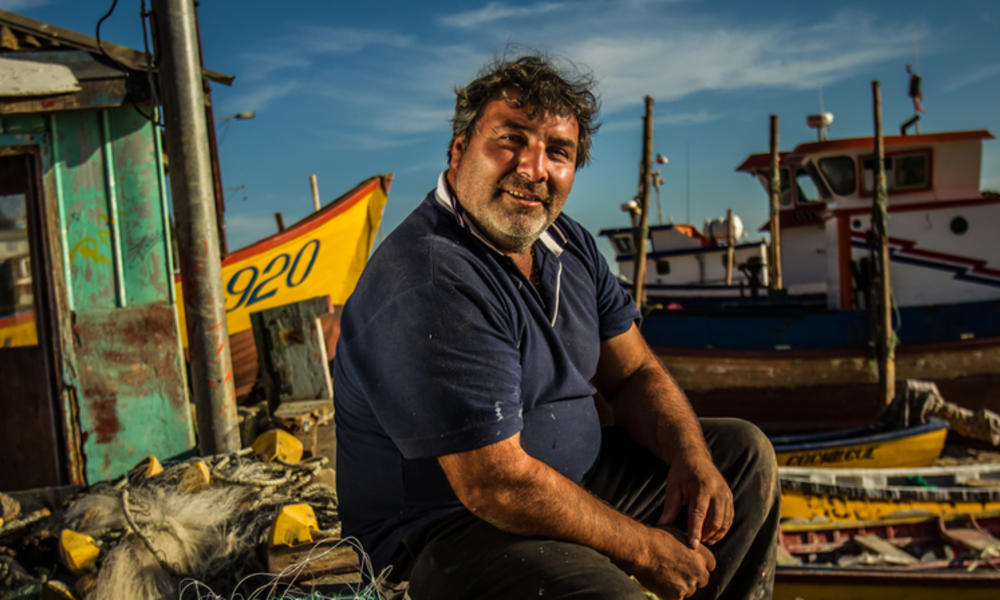Kien Giang province is nestled in the southwest of Vietnam, featuring a prominent coastline along the Gulf of Thailand. Here in these tepid waters lives the blue swimming crab, a crustacean with an olive-green body and front claws the color of the sky on a clear day.
WWF is working with some of the world’s most innovative farmers to improve shrimp production.
Shrimp has quickly become the most popular seafood in the US. Each of us eats about four pounds of it every year on average, but have you ever wondered where all that shrimp comes from?
By all accounts, Glenn Pritchard and Mia Isaacs should be rivals. They each own a seafood processing plant and exporting company in The Bahamas, and both stake a claim to the lucrative spiny lobster business. Their products reach restaurants at home and massive markets in North America, Europe, and Asia.
But one unmatched necessity brings these two competitors together without a second thought: a healthy and robust lobster population in Bahamian waters.
Between 2015 and the two first months of 2016, over 10% of farmed salmon production in Chile, or more than 100 thousand tons, has been certified according to the ASC standard, a certification and labeling scheme for responsibly farmed seafood which came off the ground with support of WWF and the Dutch Sustainable Trade Initiative (IDH) in 2009.
At the break of dawn on a warm February day, I was travelling in a van heading south along the Peruvian coast to the small port town of Pucusana. This is a place rich in culture and tradition, and home to a mahi mahi fishery where the community is working to conserve and secure its fish stocks for future generations of family fishers.
My colleague Samuel Amorós, WWF Peru fisheries officer, and I were working together to build up WWF Peru’s newly reinstated marine program. This trip was a small window into our engagement with the community to help establish a fishery improvement project (FIP) for mahi mahi.
It’s like something from a spy novel. A caravan of seven cars moving illegal goods – the first car is a decoy with legal product and paperwork. As inspectors check that car, the others loaded with contraband pass without even slowing down. They aren’t moving jewels, stolen art or weapons. They’re moving fish.
That’s right. Black market fish.
RECENT NEWS
- Investors Prioritize Traceable Seafood as a Way to Combat IUU and Overfishing
- A New Approach for Holistic Fisheries and Aquaculture Improvement
- Kroger: A Sustainability Policy Fit for Business & Planet
- Accelerating Responsible Aquaculture Practices: ASC Launches the Improver Programme
- The road to more sustainable tuna: is scaling within reach?
CATEGORIES
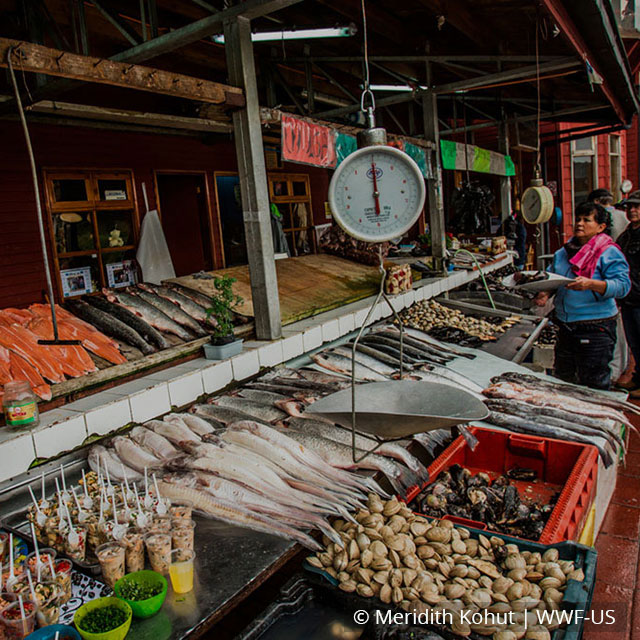
ARCHIVES
- February 2024
- January 2024
- December 2023
- November 2023
- July 2023
- June 2023
- May 2023
- March 2023
- February 2023
- January 2023
- December 2022
- November 2022
- October 2022
- September 2022
- July 2022
- June 2022
- May 2022
- April 2022
- March 2022
- February 2022
- January 2022
- December 2021
- November 2021
- October 2021
- September 2021
- August 2021
- July 2021
- June 2021
- May 2021
- April 2021
- March 2021
- February 2021
- January 2021
- October 2020
- September 2020
- August 2020
- July 2020
- June 2020
- May 2020
- March 2020
- February 2020
- January 2020
- December 2019
- November 2019
- October 2019
- September 2019
- August 2019
- July 2019
- May 2019
- April 2019
- March 2019
- February 2019
- December 2018
- October 2018
- September 2018
- August 2018
- July 2018
- June 2018
- May 2018
- April 2018
- March 2018
- June 2017
- March 2017
- December 2016
- October 2016
- July 2016
- March 2016
- June 2015
- October 2014



